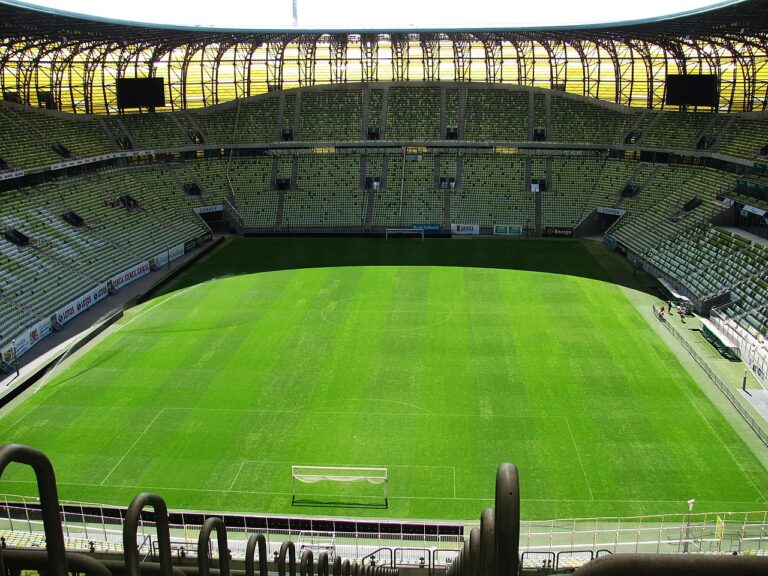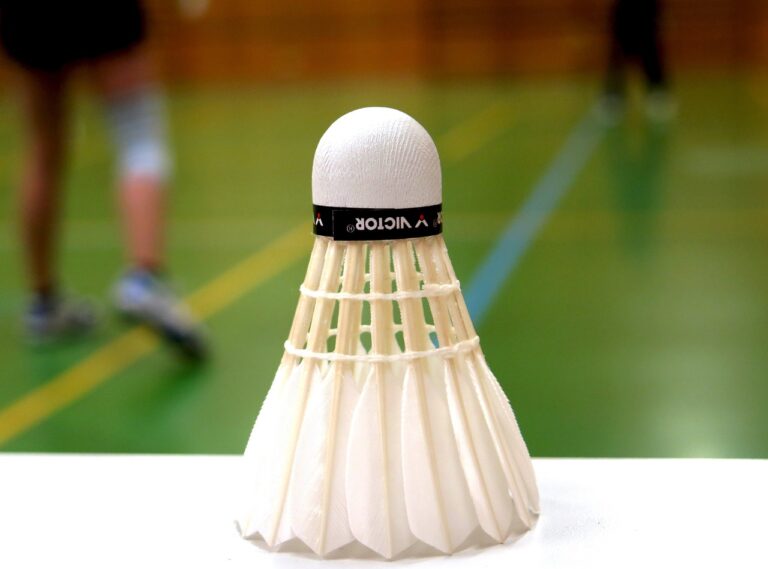How Cricket Teams Manage Team Dynamics
Online Cricket ID, Online Cricket ID: Team roles and responsibilities are essential for the smooth functioning of a team. Each member must understand their role and the duties they are accountable for. Clear delineation of responsibilities helps in avoiding confusion and overlapping tasks, thereby increasing efficiency and productivity within the team.
Furthermore, team roles should be assigned based on individual strengths and expertise. By recognizing and utilizing the unique skills of each team member, the team can leverage diversity and create a cohesive unit where everyone contributes towards achieving common goals. This not only maximizes each member’s potential but also fosters a collaborative environment built on mutual respect and understanding.
Establishing Team Goals and Objectives
Establishing team goals and objectives is crucial for guiding the direction and focus of a team. By clearly defining what the team aims to achieve, members can align their efforts towards a common purpose. Setting specific, measurable, achievable, relevant, and time-bound (SMART) goals helps in providing a roadmap for the team’s success.
When establishing team goals and objectives, it is important to involve all team members in the goal-setting process. This fosters a sense of ownership and commitment towards achieving the goals. Collaborative goal-setting also allows team members to contribute their ideas and perspectives, leading to a more comprehensive and diverse set of objectives that resonate with everyone involved.
Effective Communication Strategies within the Team
Effective communication is the lifeblood of any successful team. It is crucial for team members to openly share information, ideas, and feedback to ensure everyone is on the same page. Clear and concise communication helps in avoiding misunderstandings and promotes a more productive work environment.
Regular team meetings, whether in person or virtually, provide a platform for team members to discuss progress, challenges, and upcoming tasks. Additionally, utilizing digital communication tools such as emails, instant messaging, and project management software can streamline communication and keep everyone informed in real-time. By encouraging active listening and ensuring that everyone has a chance to voice their thoughts, teams can foster a culture of openness and transparency.
Encouraging Collaboration and Teamwork
Collaboration and teamwork are essential components for the success of any team. When team members work together towards a common goal, they can leverage each other’s strengths and expertise to achieve better outcomes. Encouraging collaboration can be done through fostering an environment where individuals feel comfortable sharing ideas, seeking input from others, and working collectively towards common objectives.
One way to promote collaboration and teamwork is by assigning tasks that require cooperation and interaction among team members. Encouraging open communication and transparency can also help in breaking down barriers and facilitating a culture of collaboration. When team members feel valued and respected for their contributions, they are more likely to actively engage with each other and work towards shared goals.
Handling Conflicts and Resolving Issues
Resolving conflicts within a team is essential for maintaining a positive working environment. When conflicts arise, it is important for team members to address the issue promptly and openly. By encouraging honest communication and active listening, teams can work together to find mutually agreeable solutions.
Team leaders play a crucial role in mediating conflicts and ensuring that all team members have a chance to voice their perspectives. Creating a safe space for open dialogue and promoting a culture of respect can help prevent conflicts from escalating. Additionally, establishing clear guidelines for conflict resolution and implementing feedback mechanisms can help teams address issues constructively and move forward towards their goals.
Building Trust and Camaraderie among Team Members
Trust and camaraderie are essential components of a successful team dynamic. When team members trust each other, they are more likely to collaborate effectively and communicate openly. Building trust often starts with small actions and consistent follow-through on commitments. Encouraging a culture of transparency and accountability can help foster trust among team members.
Camaraderie among team members is equally important as it creates a sense of belonging and unity within the team. This can be achieved through team-building activities, both formal and informal, that allow team members to bond and develop personal connections. Celebrating successes together and supporting each other during challenges can further strengthen the camaraderie among team members.
Recognizing and Valuing Individual Contributions
Individual contributions are the foundation upon which successful teams are built. Each team member brings a unique set of skills, experiences, and perspectives to the table, contributing to the overall success of the team. Recognizing and valuing these individual contributions not only boosts morale and motivation but also fosters a sense of belonging and ownership within the team.
By acknowledging the efforts and achievements of each team member, leaders can instill a sense of pride and accomplishment in their team. Celebrating milestones, praising hard work, and providing constructive feedback are all ways to show appreciation for individual contributions. When team members feel valued and recognized for their efforts, they are more likely to stay engaged, dedicated, and committed to achieving team goals.
Implementing Team Building Activities
Team building activities play a crucial role in fostering camaraderie and strengthening relationships among team members. These activities provide a platform for individuals to collaborate, communicate, and work towards a common goal outside of their usual work tasks. By engaging in team building activities, team members can further develop their trust in one another and improve their overall teamwork skills.
When implementing team building activities, it is essential to ensure that the chosen activities align with the goals and objectives of the team. Selecting activities that are meaningful and relevant to the team’s dynamics can enhance the effectiveness of the bonding experience. Additionally, it is important to consider the preferences and interests of team members to create an engaging and enjoyable experience for everyone involved.
Promoting a Positive Team Culture
Promoting a positive team culture is essential for fostering a supportive and productive work environment. Team members should be encouraged to openly communicate, share ideas, and collaborate effectively towards common goals. By creating a culture of openness and inclusivity, team members feel valued and motivated to contribute their best efforts.
Additionally, promoting a positive team culture involves recognizing and celebrating achievements, both big and small. Acknowledging individual contributions and milestones helps build morale and strengthens the sense of camaraderie within the team. By creating a culture that values and appreciates the efforts of each team member, a positive and cohesive team dynamic is cultivated.
Monitoring and Evaluating Team Performance
As a crucial step in ensuring the success and productivity of a team, monitoring and evaluating team performance should be conducted regularly. This process involves assessing how well the team is progressing towards its goals and objectives, identifying any areas of improvement, and recognizing areas of strength. By consistently monitoring performance, team leaders can stay informed about the team’s dynamics and make informed decisions to enhance overall efficiency.
Through the evaluation of team performance, leaders can gather valuable insights into individual contributions, team dynamics, and collaborative efforts. This evaluation process enables leaders to provide constructive feedback to team members, recognize outstanding achievements, and address any underlying issues that may be hindering the team’s progress. By fostering a culture of continuous improvement and accountability, teams can strive towards excellence and achieve their collective goals.
What are the key team roles and responsibilities that should be defined when monitoring and evaluating team performance?
Key team roles and responsibilities include team leader, project manager, individual team members, and any other specific roles or duties necessary for the team’s success.
How can team goals and objectives be established effectively?
Team goals and objectives should be specific, measurable, achievable, relevant, and time-bound (SMART). They should also align with the overall goals of the organization.
What are some effective communication strategies that can be implemented within a team?
Effective communication strategies include regular team meetings, clear and concise messaging, active listening, and utilizing various communication tools such as email, phone calls, and project management software.
How can conflicts be handled and issues resolved within a team?
Conflicts can be handled by facilitating open and honest discussions, addressing underlying issues, seeking compromise, and involving a neutral third party if necessary. It is important to resolve conflicts promptly to avoid negative impacts on team performance.
Why is building trust and camaraderie among team members important for team performance?
Building trust and camaraderie among team members fosters a positive working environment, improves communication, increases collaboration, and enhances overall team cohesion and performance.
How can individual contributions be recognized and valued within a team?
Individual contributions can be recognized and valued through praise, feedback, rewards, promotions, and opportunities for professional development. It is important to acknowledge and appreciate each team member’s unique skills and strengths.
What are some examples of team building activities that can be implemented to improve team performance?
Team building activities can include workshops, retreats, social events, team challenges, and volunteering opportunities. These activities help build relationships, improve communication, and strengthen teamwork within the team.
How can a positive team culture be promoted within a team?
A positive team culture can be promoted by encouraging open communication, fostering a supportive and inclusive environment, celebrating successes, and promoting a shared sense of purpose and values among team members.
Why is monitoring and evaluating team performance important for the success of a team?
Monitoring and evaluating team performance helps identify strengths and weaknesses, track progress towards goals, make informed decisions, and continuously improve team performance. It also provides valuable insights for future planning and development.







